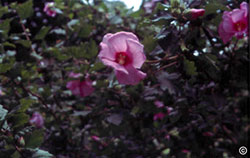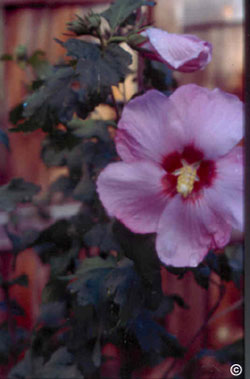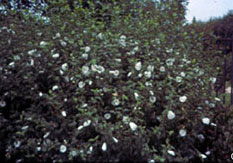 Rose-of-Sharon is a medium to large shrub that can also be grown as a small tree. It can reach 15 feet tall and wide, but many varieties remain smaller. Hardy to zone 5, it is also known as shrub althea or hibiscus.
Rose-of-Sharon is a medium to large shrub that can also be grown as a small tree. It can reach 15 feet tall and wide, but many varieties remain smaller. Hardy to zone 5, it is also known as shrub althea or hibiscus.
What colors are Rose-Of-Sharon available in?
The main ornamental feature of Rose-of-Sharon is the flowers, available in red, pink, white, purple or combinations of these colors. Some varieties have single flowers; others have double flowers. The flowers resemble those of hollyhock, a related plant. Flowering occurs on new growth beginning in July and can continue until the hard frosts of autumn. Flowers, generally 3-5 inches in diameter, are attractive to bees and occasional hummingbirds. Brown seedpods develop after flowers.

Where are Rose-of-Sharon available?
The United States National Arboretum (USNA) has released several varieties as the result of an extensive breeding program. These varieties are widely available in nurseries, and have the advantage of fewer seedlings developing from seed dropped to the ground. “Diana” has white flowers; “Helene” has white flowers with a red center; “Aphrodite” has dark pink flowers with a red center and ‘Minerva’ has lavender-pink flowers with a red center. The USNA varieties will grow to approximately 10 feet tall and 8 feet wide. Flowering can occur even on smaller young plants.

How does pruning change the plant?
Rose-of-Sharon leafs out later than many deciduous shrubs, so be patient in the spring. Pruning back extensively before leaves appear will result in fewer but larger flowers. Minimal or no pruning will result in more but smaller flowers. Possible insect pests of Rose-of-Sharon include aphids and whiteflies.
For “Aphids” refer to message #1402
For “Whiteflies” refer to message #1448
For more information, see the following Colorado State University Extension fact sheet(s).



